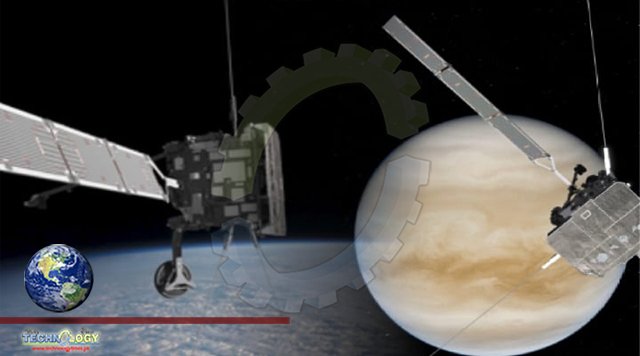In the early hours of Sunday, September 4, Solar Orbiter flew by Venus for a gravity-assist maneuver that alters the spacecraft’s orbit, which will get it even closer to the Sun. As if trying to attract the orbiter’s attention as it cozied up to another body in the Solar System, the Sun flung an enormous ‘coronal mass ejection‘ straight at the spacecraft and planet. It was just two days before their closest approach and the data are revealing.

A large coronal mass ejection erupted from the Sun in the direction of Venus. Not long later, the powerful storm arrived at the second planet from the Sun. As the data continues to come in from Solar Orbiter, this strike reveals why ‘in situ’ monitoring of space weather and its effects on the bodies, and spacecraft, of the Solar System are so important. Fortunately, there was no damage or no negative effects on the spacecraft. Indeed, the ESA-NASA solar observatory is designed to withstand and in fact measure violent outbursts from our star – although Venus doesn’t always get off so lightly. Coronal mass ejections have a tendency of eroding Venus’ atmosphere, stripping off gasses as they blast by. Currently, Solar Orbiter is a quarter of the way through its decade-long mission to observe the Sun up close and get a good look at its mysterious poles. Its orbit was chosen to be in close resonance with Venus, meaning it returns to the planet’s proximity every few orbits to use its gravity to alter or tilt its orbit. This third flyby of Venus took place on Sunday at 01:26 UTC (Saturday at 9:26 p.m. EDT), when Solar Orbiter passed 12,500 km (7,800 miles) from the planet’s center, which is very roughly 6,000 km (3,700 miles) from its gassy ‘surface’. In other words, it passed a distance half the width of Earth.
Coronal Mass Ejection, Its distance from Venus, angle of approach, and velocity were all carefully planned to get the precise desired effect from the planet’s large gravitational pull – getting the spacecraft closer to the Sun than ever before. “The close approach went exactly to plan, thanks to a great deal of planning from our colleagues in Flight Dynamics and the diligent care of the Flight Control Team,” explains Jose-Luis Pellon-Bailon, Solar Orbiter Operations Manager. “By trading ‘orbital energy’ with Venus, Solar Orbiter has used the planet’s gravity to change its orbit without the need for masses of expensive fuel. When it returns to the Sun, the spacecraft’s closest approach will be about 4.5 million km (2.8 million miles) closer than before.”Data beamed back to Earth since Solar Orbiter encountered the solar storm shows how its local environment changed as the large CME whooshed by. Although some instruments had to be turned off during its close approach to Venus, in order to protect them from stray sunlight reflected off of the planet’s surface, Solar Orbiter’s ‘in situ’ instruments remained on, recording an increase in solar energetic particles, among other things.Particles, mostly protons and electrons, but also some ionized atoms like Helium, are constantly emitted by the Sun. When particularly large flares and ejections of plasma are blasted from the Sun, these particles are picked up and carried with them, accelerated to near relativistic speeds. It is these particles that pose a radiation risk to astronauts and spacecraft. Improving our understanding of CMEs and tracking their progress as they sail through the Solar System is a big part of the Solar Orbiter’s mission. By observing CMEs, the solar wind, and the Sun’s magnetic field, the spacecraft’s ten science instruments are delivering new insight into how the 11-year cycle of solar activity works. Ultimately, these findings will help us better forecast periods of stormy space weather and protect planet Earth from the Sun’s violent outbursts.
Source: This news is originally published by scitechdaily